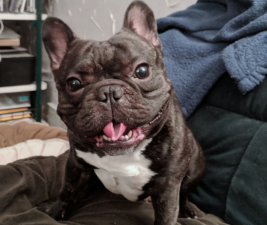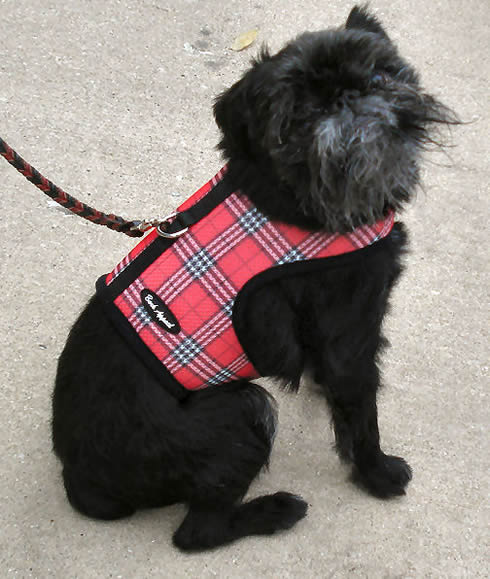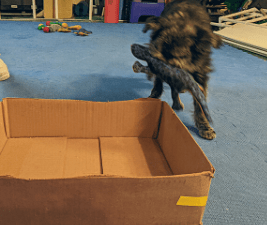June 22 is “Pet Choking Prevention” day. Which sounds like just about the most made-up, incredibly specific “holiday” ever.
On the other hand, it’s worth a reminder to do a spot-check to make sure that your dog is safe.
Collars can be dangerous
You’d think, as sellers of dog collars, that we’d advocate for dogs wearing collars all the time. Nope. Dogs should be naked in the house. The only exception might be if your dog is an extreme flight risk In that case, the collar they wear should have nothing dangling from it. If you’re adament that your dog wears I.D. at all times, it should be integral to the collar, either embroidered in or sliding on.
There are just too many hazards you may not even think about to risk hanging tags. We’ve seen cases of tags being caught in floor vents the dog was lying on.
The “naked” think holds for your fenced yard, too. Especially if you’re not out there with the dog, or if you have more than one. The most frightening story we heard was when a dog got another dog’s collar caught around its jaw when they were wrestling. It wasn’t a happy ending.
Toys can be hazards, too
We’ve all seen the warning tags on dog toys that say you should discard the toy when it becomes damaged. And always supervise your dog when playing with toys. There’s one more caution we’d add: make sure the toys, particularly solid rubber or plastic toys, have more than one opening.

It’s been a few years since we saw it, but there was a treat-dispensing toy that had only one hole. There were reports of quite a few dogs whose tongues were stuck in the toy and it had to be removed under anesthesia by a veterinarian.
Chew toys and treats also fall in this category. We actually know someone whose French Bulldog swallowed an entire beef rib bone. Nobody knows how she managed to do it. Fortunately, an emergency surgery later, she was fine. And wanted more rib bones.
What will they get into next?
You wouldn’t think a snack bag would be dangerous, but apparently they are. We’ve seen stories about dogs grabbing potato chip bags, presumably to get the delicious greasy salt left behind, were trapped, and suffocated.
Aside from the beef rib story, we can’t vouch for the truth of any of these anecdotes. But, just in case, it doesn’t really take much time to tear open a chip bag completely before you throw it away. After decades, we still cut apart the six-pack can plastic holders so sea creatures don’t get trapped. And we live nowhere near the ocean. Better safe than sorry.
Pay attention
Being aware of the potential problems goes a long way toward preventing them. Take a good look at your dog’s toys, collars, and environment. It’s not a bad idea to actually get down on hands and knees for a quick survey.
It’s pretty much the same precaution you’d take to “baby proof” your house. Practically speaking, your dog doesn’t have any more common sense than an infant. It’s up to us to keep them safe. You can also teach your dog “Drop It!” – just in case.
Enjoyed this post? Click here to sign up for the weekly newsletter and never miss another!











